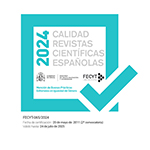El “espacio blanco” recorrido por d’Orbigny, 1831-1832. Una representación de Guarayos y sus habitantes
Resumen
Europa y América Latina han desarrollado a lo largo de la historia unas relaciones económicas, sociales, políticas y culturales que han nutrido la construcción de imaginarios en los que la percepción del “otro” se alimenta de la representación del “uno”. Estos imaginarios han sido elaborados por diversos agentes europeos y americanos. Objetivo de este trabajo es analizar la “representación” que uno de aquellos actores, Alcide d’Orbigny, hizo de la región y sus habitantes en la década de 1830. Tesis sostenida es que el naturalista-viajero francés elaboró un relato ilustrado primero, positivista después, en el cual, las sociedades europeas eran portadoras de la “civilización” y del “progreso” y exportaban un proyecto “civilizatorio” a los países extraeuropeos -Bolivia en este caso- en el que los “salvajes” y “bárbaros” guarayos debían ser “civilizados”. La fuente fundamental será el relato y los dibujos realizados por él durante el viaje y elaborados tras su regreso a Francia en 1832.Descargas
Descarga artículo
Licencia
La Revista Complutense de Historia de América, para fomentar el intercambio global del conocimiento, facilita el acceso sin restricciones a sus contenidos desde el momento de su publicación en la presente edición electrónica, y por eso es una revista de acceso abierto. Los originales publicados en esta revista son propiedad de la Universidad Complutense de Madrid y es obligatorio citar su procedencia en cualquier reproducción total o parcial. Todos los contenidos se distribuyen bajo una licencia de uso y distribución Creative Commons Reconocimiento 4.0 (CC BY 4.0). Esta circunstancia ha de hacerse constar expresamente de esta forma cuando sea necesario. Puede consultar la versión informativa y el texto legal de la licencia.











